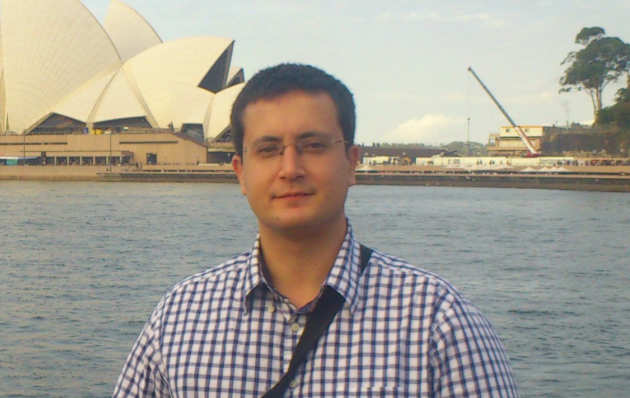 I joined Imperial College in 2000 to pursue a MSc degree in Structural Steel Design. Prior to that I graduated with a BSc in Civil Engineering from METU Ankara/Turkey. I chose the Imperial College MSc course as I was aiming for a career in Structural Engineering. Following a gap period, I returned to Imperial to work towards a PhD in Structural Fire Engineering supported by the Building Research Establishment and defended my thesis in 2006. I am a Chartered Engineer/ Member of ICE and Member of The Technical Chamber of Greece.
I joined Imperial College in 2000 to pursue a MSc degree in Structural Steel Design. Prior to that I graduated with a BSc in Civil Engineering from METU Ankara/Turkey. I chose the Imperial College MSc course as I was aiming for a career in Structural Engineering. Following a gap period, I returned to Imperial to work towards a PhD in Structural Fire Engineering supported by the Building Research Establishment and defended my thesis in 2006. I am a Chartered Engineer/ Member of ICE and Member of The Technical Chamber of Greece.
During my MSc I received a comprehensive education in the field of steel structures which covered all the crucial aspects, and during my PhD I developed skills in advanced structural mechanics. The working environment in the department was very collaborative and provided the appropriate stimulation for the researchers to achieve their aims. Being part of a department whose list of past and present academic staff include highly regarded experts in their respective fields was a special source of inspiration and motivation. All these helped me to advance professionally and provided me with the necessary background for my future career. After my PhD, I joined Waterman Group and participated in the design of various prestigious buildings in London, before moving to the Oil & Gas industry, where after working for Noble Denton (now part of DNV GL) I moved to Genesis Oil & Gas Consultants. I specialize in the field of Offshore Structures.
In my work, we collaborate with clients to develop projects from a feasibility stage up to the detailed design stage and get involved with both financial and engineering aspects. These facilities must be designed to resist natural and accidental hazards, having first made a journey through high seas from a fabrication yard to an offshore field, and installed with giant crane vessel. These operations require meticulous planning and extensive studies where one has to interact with many different disciplines. Each project has its own challenges and can include novelties which become learning topics. The training I received at Imperial is very relevant and I utilize it often in my work.
I remember my first visits to a fabrication yard and to a North Sea offshore platform were eye-opening experiences. Standing next to a skyscraper-sized structure on the quayside gives the visitor a perspective of the scale of these structures. Moreover, making a 90 minutes’ helicopter journey tens of miles into the North Sea to arrive at a remote location where lots of platforms are present helps one appreciate the challenges associated with the realization of these projects, and gives one a sense of pride for being part of these achievements.
The projects that I get involved with have a global blueprint. I often have to collaborate with various stakeholders (clients, suppliers, consultants, contractors, etc.) which are spread over different continents, and it is not uncommon to meet people that I knew from Imperial, or people with whom we shared common acquaintances at Imperial. This often breaks the ice and enables one to establish more fruitful working relationships. Again, this is possible due to the global talent that Imperial attracts and the network that I built up during my time there.
I still maintain links with the College and I get involved with students who work on M.Sc. dissertations that are related to Offshore Structures. I try to offer my insight as a practicing engineer and help them realize the applicability of their MSc work. This is a fulfilling experience as I enjoy interacting with aspiring engineers and offers me the opportunity to keep up to date with ongoing research as well.
Overall, my decision to study at Imperial is one of the best ones I made. It enabled me to develop myself on both professional and personal level, and left me with such precious memories that every time I am in the South Kensington area, it still feels like home.
Contact Structures
Structures
Civil and Environmental Engineering
Skempton Building
Imperial College London
South Kensington Campus
London, SW7 2AZ
Telephone:
+44(0) 207 594 6040
Email: r.bello@imperial.ac.uk
Alternatively view our people lists
We are located in the Skempton Building (building number 27 on the South Kensington Campus Map). How to find us